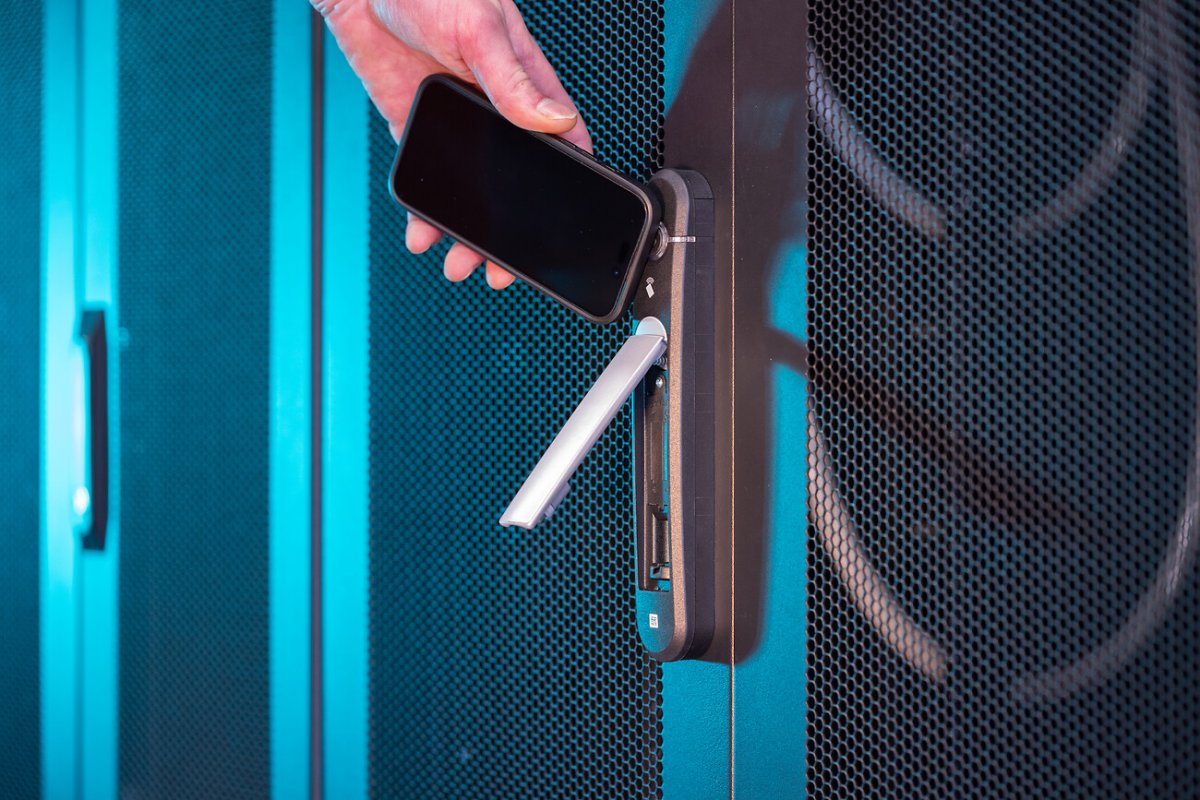Data Centre Security: Protecting Infrastructure from Physical and Cyber Threats
Cyber Security Insights for Resilient Digital Defence
Data Centre Security: Protecting Infrastructure from Physical and Cyber Threats
Features
News in Cloud Computing & Data Storage
OpenNebula, Canonical partner on cloud security
OpenNebula Systems, a global open-source technology provider, has formed a new partnership with UK developer Canonical to offer Ubuntu Pro as a built-in, security-maintained operating system for hypervisor nodes running OpenNebula.
The collaboration is intended to streamline installation, improve long-term maintenance, and reinforce security and compliance for enterprise cloud environments.
OpenNebula is used for virtualisation, cloud deployment, and multi-cluster Kubernetes management. It integrates with a range of technology partners, including NetApp and Veeam, and is supported by relationships with NVIDIA, Dell Technologies, and Ampere.
These partnerships support its use in high-performance and AI-focused environments.
Beginning with the OpenNebula 7.0 release, Ubuntu Pro becomes an optional operating system for hypervisor nodes.
Canonical’s long-term security maintenance, rapid patch delivery, and established update process are designed to help teams manage production systems where new vulnerabilities emerge frequently.
Integrated security maintenance for hypervisor nodes
With Ubuntu Pro embedded into OpenNebula workflows, users will gain access to extended security support, expedited patching, and coordinated lifecycle updates.
The approach aims to reduce operational risk and maintain compliance across large-scale, distributed environments.
Constantino Vázquez, VP of Engineering Services at OpenNebula Systems, explains, “Our mission is to provide a truly sovereign and secure multi-tenant cloud and edge platform for enterprises and public institutions.
"Partnering with Canonical to integrate Ubuntu Pro into OpenNebula strengthens our customers’ confidence by combining open innovation with long-term stability, security, and compliance.”
Mark Lewis, VP of Application Services at Canonical, adds, “Ubuntu Pro provides the secure foundation that modern cloud and AI infrastructures demand.
"By embedding Ubuntu Pro into OpenNebula, we are providing enterprises [with] a robust and compliance-ready environment from the bare metal to the AI workload - making open source innovation ready for enterprise-grade operations.”
Joe Peck - 2 December 2025
Data Centre Infrastructure News & Trends
Data Centre Security: Protecting Infrastructure from Physical and Cyber Threats
Innovations in Data Center Power and Cooling Solutions
Products
Security Risk Management for Data Centre Infrastructure
SPP Pumps brings fire and cooling experience to DCs
SPP Pumps, a manufacturer of centrifugal pumps and systems, and its subsidiary, SyncroFlo, have combined their fire protection and cooling capabilities to support the expanding data centre sector.
The companies aim to offer an integrated approach to pumping, fire suppression, and liquid cooling as operators and contractors face rising demand for large-scale, high-density facilities.
The combined portfolio draws on SPP’s nearly 150 years of engineering experience and SyncroFlo’s long history in pre-packaged pump system manufacturing.
With modern co-location and hyperscale facilities requiring hundreds of pumps on a single site, the companies state that the joint approach is intended to streamline procurement and project coordination for contractors, consultants, developers, and OEMs.
SPP’s offering spans pump equipment for liquid-cooled systems, cooling towers, chillers, CRAC and CRAH systems, water treatment, transformer cooling, heat recovery, and fire suppression. Its fire pump equipment is currently deployed across regulated markets, with SPP and SyncroFlo packages available to meet NFPA 20 requirements.
Integrated pump systems for construction efficiency
The company says its portfolio also includes pre-packaged pump systems that are modular and tailored to each project. These factory-tested units are designed to reduce installation time and simplify on-site coordination, helping to address construction schedules and cost pressures.
Tom Salmon, Group Business Development Manager for Data Centres at SPP and SyncroFlo, comments, “Both organisations have established strong credentials independently, with over 75 data centre projects delivered for the world’s largest operators.
"We’re now combining our group’s extensive fire suppression, HVAC, and cooling capabilities. By bringing together our complementary capabilities from SPP, SyncroFlo, and other companies in our group, we can now offer comprehensive solutions that cover an entire data centre's pumping requirements.”
John Santi, Vice President of Commercial Sales at SyncroFlo, adds, “Design consultants and contractors tell us lead time is critical. They cannot afford schedule delays. Our pre-packaged systems are factory-tested and ready for immediate commissioning.
"With our project delivery experience and expertise across fire suppression, cooling, and heat transfer combined under one roof, we eliminate the coordination headaches of managing multiple suppliers across different disciplines.”
Tom continues, “In many growth markets, data centres are now classified as critical national infrastructure, and rightly so. These facilities cannot afford downtime, and our experience with critical infrastructure positions us to best serve this market."
Joe Peck - 20 November 2025
Data Centre Operations: Optimising Infrastructure for Performance and Reliability
Data Centre Security: Protecting Infrastructure from Physical and Cyber Threats
Essential Disaster Recovery News for Data Centres
Modular Data Centres in the UK: Scalable, Smart Infrastructure
Secure I.T. constructs modular DC for NHS Trust
Secure I.T. Environments (SITE), a UK design and build company for modular, containerised, and micro data centres, has today announced the handover of its latest external modular data centre project with Somerset NHS Foundation Trust.
The new 125m² data centre has now been completed and provides an energy-efficient disaster recovery facility for the Trust, ensuring it can continue to deliver resilient services across Somerset and for the 1.7 million patient contacts that take place.
A data centre for all challenges
Whilst the Trust initially considered cloud solutions for its data requirements, these could not meet the requirements for existing clinical software, nor the cost constraints in place.
In response, SITE proposed its external modular data centre, which is intended to provide a cost-effective and secure way to build new data centres or extend existing infrastructure to meet the growing demands of on-site IT needs.
SITE says its modular system can be built rapidly and that this particular project was designed, built, and live within 8 months.
The company also says its modular rooms are a pre-engineered solution, offering a clean and fast construction process, making it appropriate for locations where an existing room is not available or where a new building is impractical.
The modular system reportedly has high protection, including protecting against physical security threats by meeting industry standards BS476 / EN1047 and LPS1175 security ratings.
Design and delivery
The design was divided into three areas: the main IT racks, an electrical plant area, and build area.
Working with the Trust, SITE’s design incorporated 20 19” 48U cabinets, configured in two rows of 10 with cold aisle containment, energy-efficient UPS systems in N+1 format, as well as GEA Multi-DENCO Energy Efficient DX Freecool air conditioning units, also in N+1 configuration.
SITE managed the delivery of all groundworks and mechanical and electrical infrastructure.
The delivery of the new facility included a new concrete pad, drainage, power distribution, FK 5-1-12 fire suppression, VESDA detection systems, environmental monitoring, backup generator, and fuel tank.
Furthermore, the design and specification hardened the data centre against burglary (LPS 1175 SR2 specifications), fire, fire-fighting water, heat, humidity, gases, dust, debris, and unauthorised access.
The facility's external perimeter security has been protected with CCTV, prison mesh anti-climb fencing, security gates, and Amcor barriers.
Chris Wellfair, Projects Director at Secure I.T. Environments, comments, “At a time when many organisations are trying to balance the needs of their IT infrastructure with challenging budgets, our modular data centres are making it easier for them to achieve their goals without compromising on performance.
"Having previously built a data centre for the Trust at another hospital location, we were pleased to work with Somerset NHS Foundation Trust to deliver this new data centre to meet their specific requirements.”
Adam Morgan, Deputy Chief Technology Officer at Somerset NHS Foundation Trust, adds, “Secure I.T. have delivered a significant upgrade to the Trust’s data centre infrastructure.
"We were very specific about the design brief and requirements, and it has been a positive project delivering this facility with Secure I.T. Environments.
"The Trust now has additional capacity for growth for years to come, which will bring benefits to clinical care by enabling resilient delivery of clinical systems across the county of Somerset.”
For more from Secure I.T. Environments, click here.
Joe Peck - 18 November 2025
Data Centre Infrastructure News & Trends
Data Centre Security: Protecting Infrastructure from Physical and Cyber Threats
Enclosures, Cabinets & Racks for Data Centre Efficiency
Products
Security Risk Management for Data Centre Infrastructure
R&M introduces radio-based access control for racks
R&M, a Swiss developer and provider of infrastructure for data and communications networks, is introducing radio-based access control for data centres. The core product is an electromechanical door handle for the racks of the BladeShelter and Freenet families from R&M.
Technicians can only open the door handles with authorised transponder cards, while administrators can control them remotely via encrypted radio connections and data networks.
R&M says it is thus integrating high-security digital protection into its "holistic infrastructure solutions" for data centres.
Package details
One installation comprises up to 1,200 door handles for server and network racks, as well as radio and control modules for computer rooms.
The door handles do not require any wiring in the racks. Their electronics are powered by batteries whose power is sufficient for three years of operation or 30,000 locking cycles.
The personalised transponder cards communicate with the door handles via RFID antennas.
In addition, there is software to manage users, access rights, the transponder cards, and racks. The software creates protocols, visualises alarm states, and supports other functions. It can be operated remotely and integrated into superordinate systems such as data centre infrastructure management (DCIM).
The new offer is the result of the collaboration with German manufacturer EMKA, being based on the company's 'Agent E', an intelligent locking system.
The R&M offering aims to integrate complementary systems from selected manufacturers into infrastructure for data centres.
In Europe, R&M notes it is already working with several independent partner companies that pursue comparable medium-sized business models and sustainability goals.
For more from R&M, click here.
Joe Peck - 18 November 2025
Data Centre Security: Protecting Infrastructure from Physical and Cyber Threats
Products
Security Risk Management for Data Centre Infrastructure
OPTEX introduces indoor LiDAR sensor for DC security
OPTEX, a manufacturer of intrusion detection sensors and security systems, has launched the REDSCAN Lite, a short-range indoor LiDAR sensor designed to provide precise and rapid detection for protecting critical infrastructure within data centres.
Founded in Japan in 1979, OPTEX has developed a series of sensor innovations, including the use of LiDAR technology for security detection.
The company says its REDSCAN range is recognised for improving the accuracy and reliability of intrusion detection in sensitive environments.
Addressing physical security risks in critical environments
As data centres across the UK and EU are now classified as critical infrastructure, operators face increasing pressure to meet strict security standards and mitigate both internal and external risks.
Industry data indicates that nearly two thirds of data centres experienced a physical security breach in the past year.
The REDSCAN Lite uses 2D LiDAR technology to detect intrusions within a 10 m x 10 m range, reportedly responding in as little as 100 milliseconds.
The sensor can be positioned vertically to create invisible ‘laser walls’ around assets such as server racks, ventilation conduits, and access points, or horizontally to protect ceilings, skylights, and raised floors.
Engineered for high-density environments, the REDSCAN Lite is capable of detecting small-scale activities such as the insertion of USB drives or LAN cables through server racks.
It is designed to operate effectively despite temperature fluctuations, low light, or complete darkness, helping reduce false alarms common in traditional systems.
Purpose-built for confined data centre spaces
Mac Kokobo, Head of Global Security Business at OPTEX, says the product was developed in response to growing demand from data centre operators, noting, “In today’s modern environments, such as data centres, spaces are becoming tighter and tighter filling with racks and processors.
"This latest REDSCAN Lite has been developed to meet the specific need for rapid detection in tight indoor spaces where high security is crucial.
“Feedback from customers highlighted a clear need for enhanced protection in small, narrow areas and spaces, so the REDSCAN Lite sensor has been designed to fit into the narrow gaps and is engineered to provide highly accurate and fast detection in indoor spaces that other technologies simply cannot reach.”
The REDSCAN Lite RS-1010L is now available for deployment.
Joe Peck - 12 November 2025
Data Centre Architecture Insights & Best Practices
Data Centre Build News & Insights
Data Centre Security: Protecting Infrastructure from Physical and Cyber Threats
News
Security Risk Management for Data Centre Infrastructure
AWS outage sparks call for resilient DC strategies
This Monday’s Amazon Web Services (AWS) outage demonstrates the importance of investing in resilient data centre strategies, according to maintenance specialists Arfon Engineering.
The worldwide outage saw millions unable to access popular apps and websites - including Alexa, Snapchat, and Reddit - after a Domain Name System (DNS) error took down the major AWS data centre site in Virginia.
With hundreds of platforms down for over eight hours, it was the largest internet disruption since a CrowdStrike update caused a global IT meltdown last year.
The financial impact of the crash is expected to reach into the hundreds of billions, while the potential reputational damage could be even more severe in the long run.
A preventable disaster
Although not caused by a lack of maintenance or physical malfunction of equipment and building services, the consequences of the downtime do reflect an opportunity for operators to adopt predictive maintenance strategies.
Alice Oakes, Service and Support Manager at Arfon, comments, “The chaos brought by Monday’s outage shows the sheer damage that can be caused by something as simple servers going down.
"While it might’ve been unavoidable, this is certainly not the case for downtime caused by equipment failures and reactive maintenance.
“This is where predictive maintenance can make a real difference; it's more resilient, cost-effective, and environmentally responsible than typical reactive or preventative approaches, presenting operators with the chance to stay ahead of potential issues.”
Predictive maintenance strategies incorporate condition-based monitoring (CBM), which uses real-time data to assess equipment health and forecast potential failures well in advance.
This enables informed and proactive maintenance decisions before the point of downtime, eliminating unnecessary interventions and extending asset life in the process.
CBM also reduces the frequency of unnecessary replacements, contributing to lower carbon emissions and reduced energy consumption in a sector under scrutiny for its environmental impact.
Alice continues, “This incident is a timely reminder that resilience should be built into every layer of data centre infrastructure, especially the physical equipment powering them.
"With billions set to be invested in UK data centres over the coming years, operators have a golden opportunity to future-proof their facilities.
“Predictive maintenance should be cornerstone of both new-build and retrofit facilities to adapt to ensure continuity in a sector where downtime simply isn’t an option.”
Joe Peck - 24 October 2025
Data Centre Build News & Insights
Data Centre Projects: Infrastructure Builds, Innovations & Updates
Exclusive
Security Risk Management for Data Centre Infrastructure
Pressing challenges impacting the future of US data centres
In this exclusive article for DCNN, Matt Coffel, Chief Commercial and Innovation Officer at Mission Critical Group (MCG), explores how growth in the US data centre market is being affected by increasing challenges, demanding new levels of collaboration and innovation across the sector:
An increasingly omnipresent industry
Data centres and related facilities are everywhere today. Synergy Research Group states hyperscalers account for 44% of those facilities worldwide, while non-hyperscale colocation and on-premise account for 22% and 34% respectively. They also project that by 2030, hyperscalers will account for 61% of all data centres and related facilities.
While there are no definitive estimates on how many of these facilities will be constructed in the US in the coming years, planning and development in the country are happening faster than ever before. Take, for example, the recent developments in Pennsylvania regarding investment in data centres and other technology infrastructure to support AI, including significant investments from Amazon and CoreWeave.
With AI adoption surging and data generation accelerating in sectors like healthcare, financial services, and the federal government, the number of data centres is only set to grow. But as demand rises, so too do the obstacles. Data centre operators and their partners face mounting challenges that threaten timelines, drive up costs, and complicate efforts to scale efficiently - and there are no easy fixes.
Persistent and critical challenges
When it comes to the construction of a data centre, there are many factors to consider. However, four factors have emerged as critical challenges for data centre operators and their partners: permitting, power, skilled talent, and compute.
1. Regulation: Securing permits to build and operate
Even as demand for compute and power accelerates, operators are forced to navigate lengthy and often inconsistent approval processes. In some jurisdictions, permitting can take two to three years before projects can even break ground. These delays put US developers at a disadvantage compared to countries with more streamlined regulatory systems.
The challenge is compounded by the sheer scale of today’s facilities. Projects promising multiple gigawatts of capacity require not only land and power, but also regulatory sign-off on issues such as environmental impact, emissions, and noise. These reviews often involve multiple parties - utilities, consultants, environmental specialists, and local governments - which makes coordination slow and uncertain. Moreover, the difficulty varies widely by location. In cities like Austin in Texas, approvals can be tough to secure, while just miles outside the city limits, the process may move much faster.
2. Time to power
According to the International Energy Agency’s (IEA) Energy and AI report, “Power consumption by data centres is on course to account for almost half of the growth in electricity demand between now and 2030 in the US.”
This rising demand is evident in Northern Virginia, where a large cluster of data centres has been built over the past twenty years. With this cluster of data centres in a single area, along with the demands from AI and data processing loads, power substations have reached maximum capacity. This has forced utility providers and data centre operators to either bring in new lines from distant locations - where there is excess power, but transmission infrastructure is lacking - or to build new data centres in rural areas so they can access untapped power.
Yet, building new transmission lines from other locations or setting up data centres can take years and doesn’t address the current power demand.
3. Access to skilled talent to support current and future projects
Data centre operators and their partners are working to build new facilities across the US, often in remote parts such as Western Texas, where they can access untapped power sources. Building in these areas introduces several challenges related to skilled labour.
Building and maintaining a data centre requires highly skilled electricians, mechanics, and controls specialists who can handle complex electrical and mechanical systems and often on-site power generation. However, the US faces a nationwide shortage of these workers. The US Bureau of Labor Statistics forecasts that employment for electrical workers will grow by 11% from 2023 to 2033 - a much faster rate than the average for all jobs. Still, many electricians are nearing retirement and set to leave the field in the coming years. This is likely to create a gap that operators will find difficult to fill as they work to build and keep their facilities running.
Additionally, data centre operators and their partners face the reality that many skilled workers are unwilling to live far from population centres.
Recent estimates from Goldman Sachs Research underscore the scale of this challenge. It projects that the US will require 207,000 more transmission and interconnection workers and 300,000 extra jobs in power technologies, manufacturing, construction, and operations to support the additional power consumption needs projected for the US by 2030.
This dual challenge of labour scarcity and logistical complexity is making traditional, on-site construction methods increasingly untenable. As a result, the industry is pivoting towards prefabricated, modular power solutions that are engineered and assembled in a controlled factory environment. This approach mitigates the impact of localised labour shortages by capitalising on a centralised, highly skilled workforce and deploying nearly complete, pre-tested power modules to the remote data centre location for rapid and simplified final installation.
4. The accelerating pace of change in compute technology
The speed at which compute technology is evolving has reached an unprecedented level, putting enormous pressure on data centre operators and their partners.
Moore’s Law is no longer the standard; today’s compute configurations are far more advanced than ever before, with denser platforms being released every 12 to 18 months. This rapid cycle forces operators to rethink how they design and future-proof facilities - leveraging concepts such as modularisation - as infrastructure built just a few years ago can quickly fall behind.
The need for collaboration
Each of these challenges is significant on its own, but together they mark one of the most complex periods in the history of infrastructure development. To move forward, data centre operators, utilities, manufacturers, technology providers, and government agencies must work closely to identify solutions and provide support for each obstacle.
On the skilled labour front, companies outside the manufacturing space are also contributing. Earlier this year, Google pledged support to train 100,000 electrical workers and 30,000 new apprentices in the US. This funding was awarded to the electrical training ALLIANCE (etA), the largest apprenticeship and training program of its kind, founded by the International Brotherhood of Electrical Workers and NECA.
State leaders are playing a role as well. In Pennsylvania this summer, for example, the governor and other legislators have demonstrated strong support for data centre growth.
MCG, a manufacturer and integrator of power and electrical systems, is one example of how industry players are stepping up. MCG designs, manufactures, delivers, and services systems tailored for data centre operators and other mission critical environments.
In collaboration with operators and other equipment and technology providers, MCG produces modular power systems that are built off-site to ease workforce constraints. These systems are then delivered directly to data centres or their power facilities, where the MCG team commissions and maintains them.
With efforts from government officials, companies like MCG and Google, and other stakeholders, the US data centre industry can continue powering the digital future - no matter how much demand for power and compute increases.
For more from Mission Critical Group, click here.
Joe Peck - 17 October 2025
Data Centre Infrastructure News & Trends
Data Centre Security: Protecting Infrastructure from Physical and Cyber Threats
Innovations in Data Center Power and Cooling Solutions
Security Risk Management for Data Centre Infrastructure
Sponsored
Uncover the hidden risks in data centre resilience
In July 2024, a lightning arrester failure in Northern Virginia, USA, triggered a massive 1,500MW load transfer across 70 data centres - handling over 70% of global internet traffic.
The result? No customer outages, but a cascade of grid instability and unexpected generator behaviour that exposed critical vulnerabilities in power resilience.
Powerside’s latest whitepaper - entitled Data Centre Load Transfer Event – Critical Insights from Power Quality Monitoring - delivers a technical case study from this unprecedented event, revealing:
• Why identical voltage disturbances led to vastly different data centre responses
• How power quality monitoring helped decode complex grid interactions
• What this means for future-proofing infrastructure in 'Data Centre Alley' and beyond
Whether you are managing mission-critical infrastructure or advising on grid stability, this is essential reading.
You can download the full whitepaper by registering below:
[ninja_form id=5]
Joe Peck - 13 October 2025
Cyber Security Insights for Resilient Digital Defence
Data Centre Infrastructure News & Trends
Data Centre Security: Protecting Infrastructure from Physical and Cyber Threats
Enterprise Network Infrastructure: Design, Performance & Security
Macquarie, Netskope partner on network security in Australia
Macquarie Telecom, an Australian provider of data centres, cloud services, cybersecurity, and telecommunications, part of Macquarie Technology Group, has announced a partnership with Netskope to simplify how Australian organisations secure and manage data, cloud, and AI applications.
The collaboration combines Netskope’s Security Service Edge (SSE) platform with Macquarie Telecom’s software-defined wide area network (SD-WAN). Together, these form a Secure Access Service Edge (SASE) framework, offering integrated networking and security functions for organisations adopting cloud services and AI.
Addressing cybersecurity pressures
Australian businesses have faced repeated data breaches in recent years, prompting tighter cybersecurity regulation and greater demands on IT teams.
The partnership aims to provide unified security and network management, helping organisations protect users and data across different environments.
Netskope’s platform consolidates web, data, cloud, and AI security into a single system, designed to reduce costs and balance protection with performance. It is IRAP-assessed at the PROTECTED level for use within Australian Government departments and critical industries.
The combined service also supports compliance with the Security of Critical Infrastructure (SOCI) Act and the Essential Eight framework.
Luke Clifton, Group Executive for Macquarie Telecom, says, “Organisations big and small are under immense pressure to strengthen their cyber defences while keeping operations simple and manageable.
"By joining forces with Netskope, we’re giving customers a smarter, more resilient network backed by integrated, enterprise-grade security. They’re getting the best of both worlds.”
Tony Burnside, Senior Vice President and Head of APAC at Netskope, adds, “Modern networks need to be both fast and secure, but many organisations are still having to accept trade-offs between performance and security.
"Networking and security consolidation is now a cornerstone of the demands of modern business, and through this partnership with Macquarie Telecom, we will help more Australian organisations unlock enhanced levels of data security.”
Netskope already works with Macquarie Government, Macquarie Telecom’s sister company, to deliver SASE technology to federal government customers. The new partnership expands that collaboration into the wider business sector.
For more from Macquarie Telecom, click here.
Joe Peck - 1 October 2025
Cyber Security Insights for Resilient Digital Defence
Data Centre Security: Protecting Infrastructure from Physical and Cyber Threats
News
Security Risk Management for Data Centre Infrastructure
Securitas partners with Rohde & Schwarz on DC security
Securitas, a global security services provider, has announced a partnership with Rohde & Schwarz to integrate millimetre wave people-screening technology into its data centre security offering.
The collaboration is aimed at strengthening protection against insider threats, data theft, and sabotage as demand for always-on digital infrastructure increases.
Millimetre wave screening for critical environments
At the core of the partnership is the use of Rohde & Schwarz’s Quick Personnel Security Scanners (QPS), which employ millimetre wave technology and artificial intelligence to detect potential threats.
Already in use by government agencies and high-security organisations, the scanners provide non-contact, safe, and accurate screening while supporting real-time decision-making by on-site security officers.
According to Securitas, the QPS improves operational flow by reducing the need for manual screening, enabling more efficient staffing models and allowing remote monitoring. The system also provides insights into alarm rates and throughput, supporting both regulatory compliance and continuity of operations.
Milton Plet, Senior Vice President and Head of Global Clients Data Center Group at Securitas, says, “This is a perfect demonstration of how technology augments - rather than replaces - human expertise.
"Our officers are still at the core of the solution, only better supported by real-time information to make even better decisions in order to protect our clients’ assets.”
Expanding security options for data centres
Andreas Haegele, Vice President of Microwave Imaging at Rohde & Schwarz, adds, “The strategic partnership with Securitas enables us to introduce our security scanners, formerly exclusive to governments, now also to data centres, where adaptability, consistency, and precision are key.
"Together we are delivering a customised, future-proof solution that adapts to both clients’ needs and the threat landscape.”
Nelson Barreto, Senior Vice President, Global Clients at Securitas Technology, argues, “By combining electronic security expertise along with our global protective services and reach, we’re delivering a smarter, more adaptive approach to securing data centres, no matter where they’re located.”
Securitas has more than 90 years of experience in protective services. By adding advanced millimetre wave screening to its multi-layered security framework, the company says it aims to enhance both resilience and efficiency in data centre operations.
For more from Securitas, click here.
Joe Peck - 26 September 2025

Head office & Accounts:
Suite 14, 6-8 Revenge Road, Lordswood
Kent ME5 8UD
T: +44 (0)1634 673163
F: +44 (0)1634 673173









